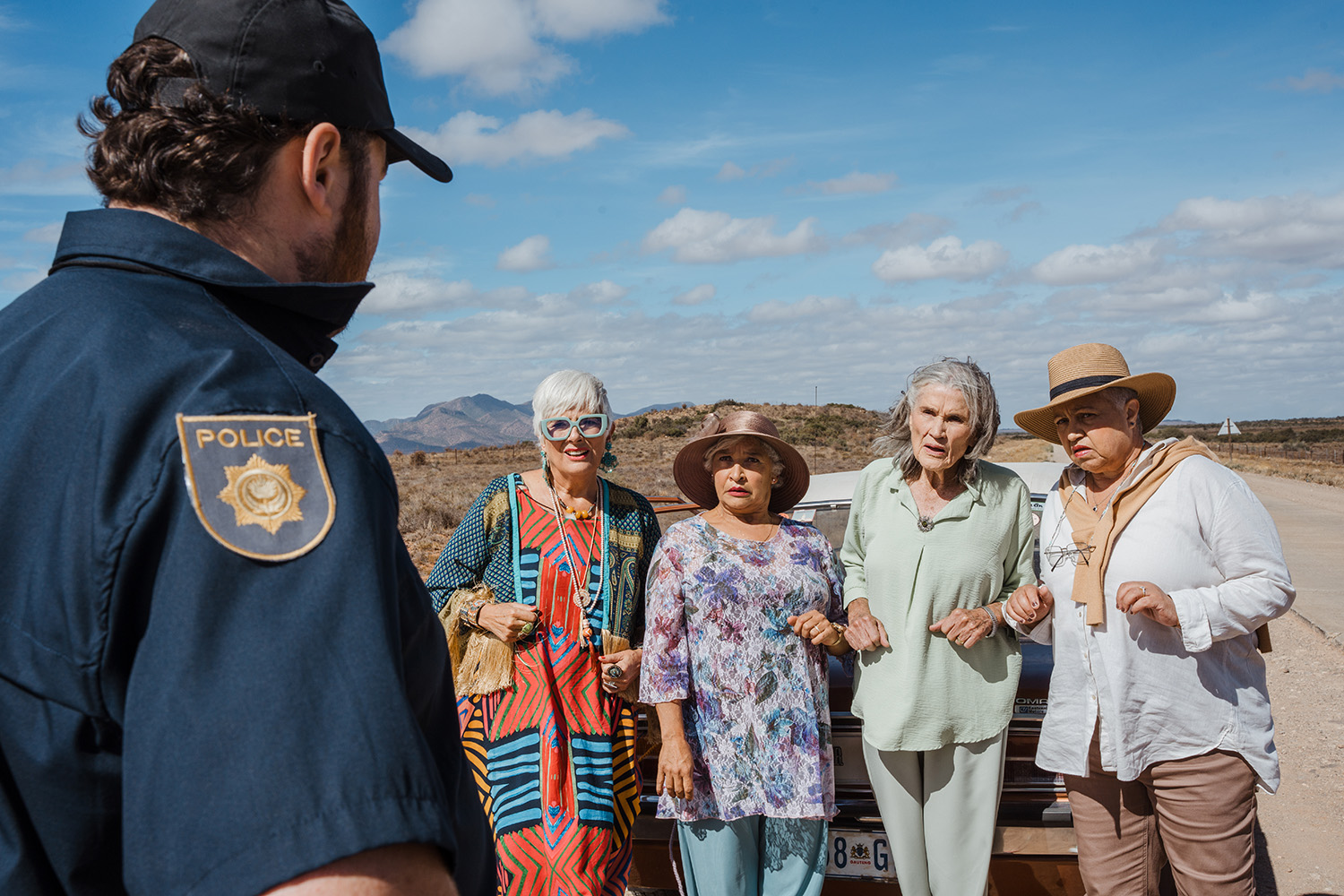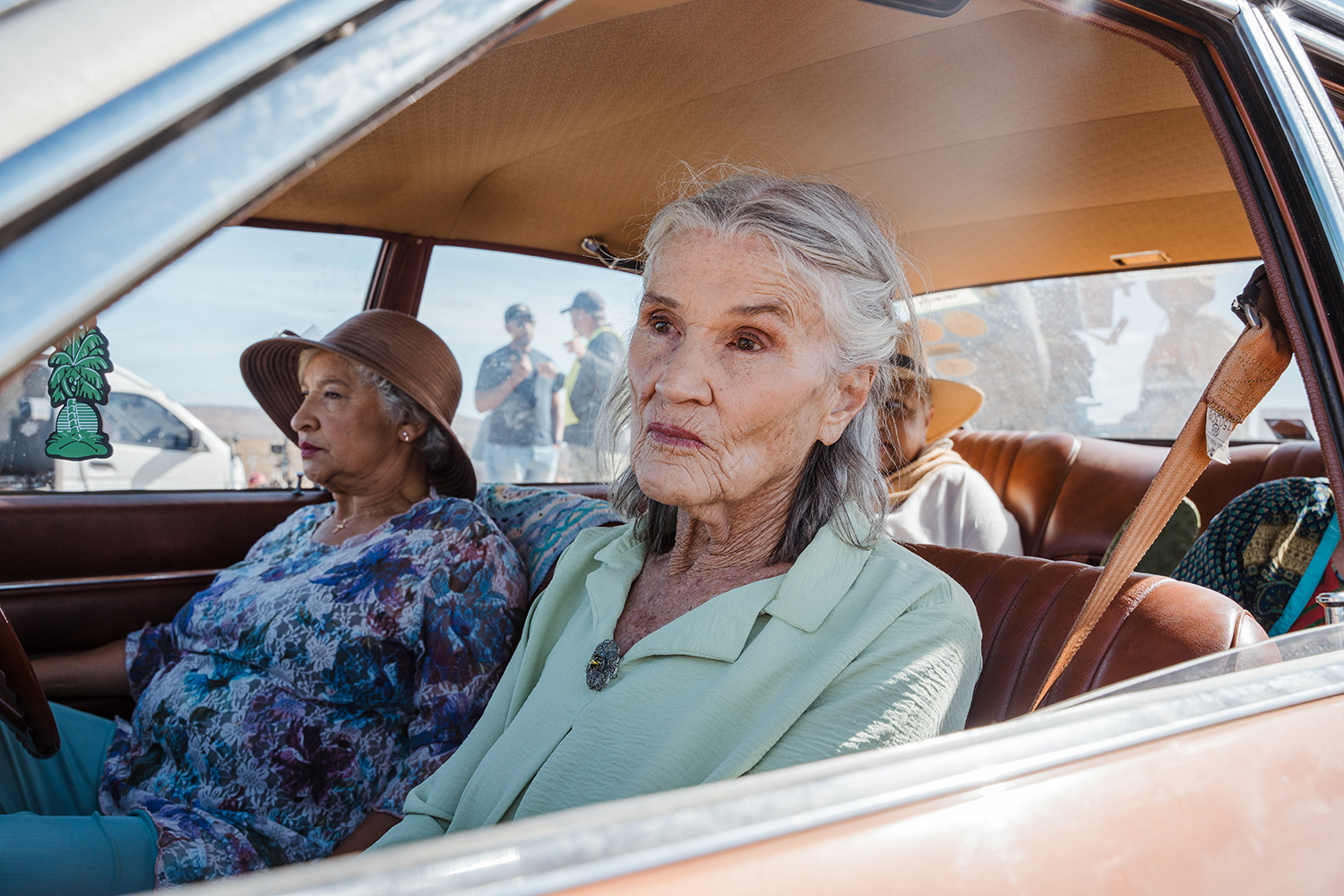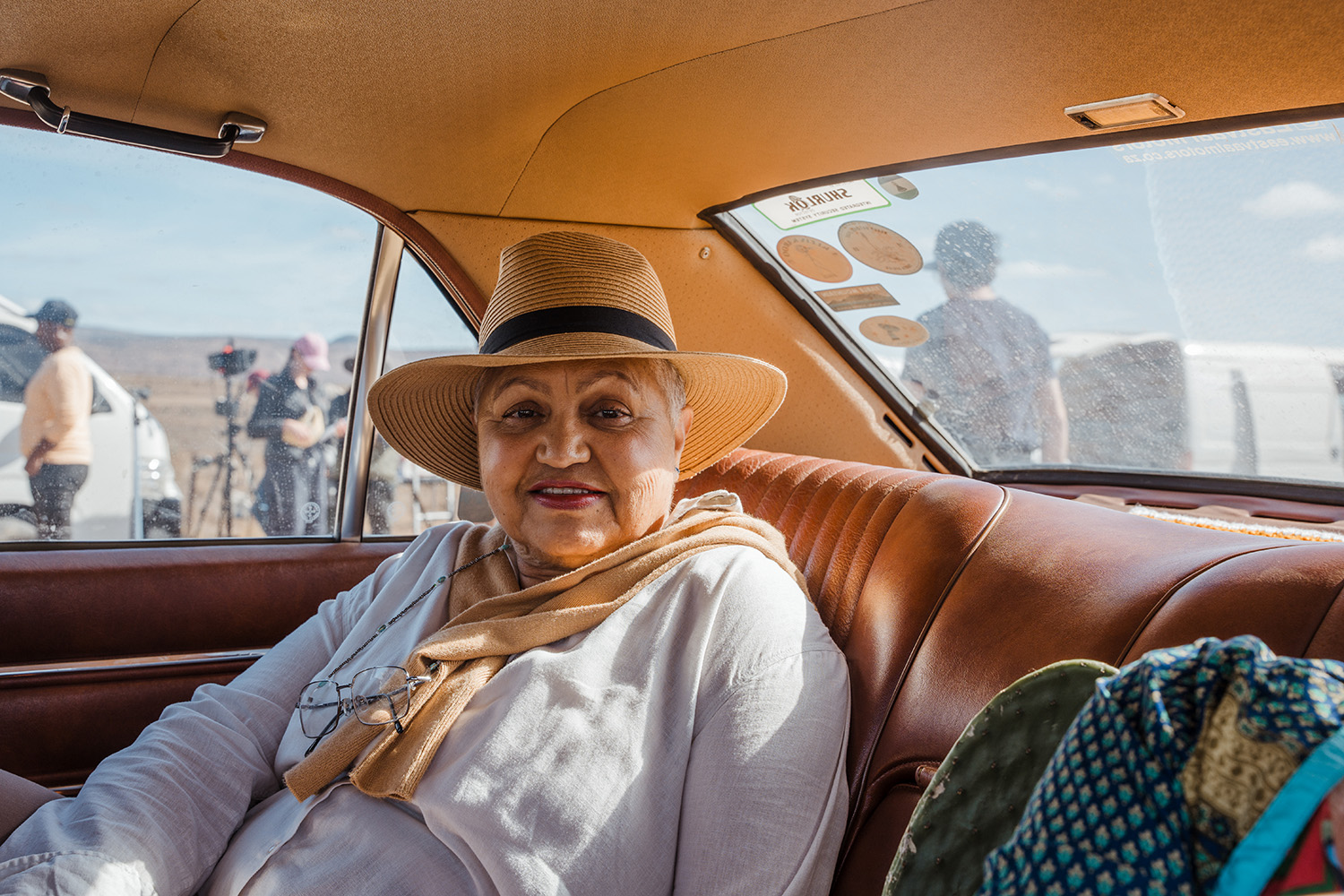



Feature film: Die Kwiksilwers
Quicksilver, the vintage Ford Granada in Die Kwiksilwers, is not just any old car. For Elsabe Marais (Lida Botha), it is like a time capsule holding the memories of her late husband, with whom she regularly undertook adventures on the road.
The headstrong Elsabe departs on a trip through the Karoo with three elderly friends to experience a meteor shower in Sutherland. The rest of the unlikely foursome are Anna (June van Merch), Elsabe’s nosey neighbour; the flamboyant Mienkie (Susanne Beyers) and the reserved Katie (Theresa Sedras). They have to make it to Sutherland in three days while trying to dodge Elsabe’s overprotective son Wikus (Jacques Bessenger).
Jordy Sank, Gabriella Blumberg and Marista van Eeden, who collaborated on the screenplay, demonstrate with this film that old age is no reason to give up on life.
Jordy talked about Die Kwiksilwers.
Where does the story of Die Kwiksilwers come from?
Older people have always inspired me. When I made the documentary, I am here, I had close contact with a Holocaust survivor who was just short of 100 years old. It may sound strange, but this elderly lady, Ella Blumenthal, injected me as a young man with new exuberance for life.
Two years ago, Sanktuary Films made Leemtes & leegheid (A Void) for the Silwerskerm Festival, a short film about a woman whose husband passes away. It was the first time we worked with Lida Botha, and it was so much fun that we wanted to create a new project with her.
Following on Leemtes & leegheid and the way we examined loss and mourning in the film, Die Kwiksilwers also explores loss, but from a more comedic angle. The movie shows that nobody is too old to live life to the full, or to regain their life energy.
You have worked with several legendary actresses on this project. Please tell us about the experience.
Lida Botha is in her late eighties, but she was the most energetic person on set! All the women, also June, Susanne and Nadine, contributed so much to both the drama and the comedy. We gave them a lot of freedom to ad lib, and they improvised left, right and centre! That was a source for plenty of funny moments in the movie.
The actresses were responsible for such a big part of the joy and feeling of the film, demonstrating that nobody is too old to learn something new or to have new experiences.
The four main characters all experience personal growth as the story unfolds. Tell us more.
For Elsabe (Botha), it’s all about growth and friendship. Anna (Van Merch), the ‘frenemy’-in-chief, learns to be less of a control freak and to allow her friends to live their own lives. The free-spirited Mienkie (Beyers) becomes more considerate towards other people. Katie (Sedras), the more reserved character, learns to let go a bit and live a little …
This is the third project of you and Sanktuary Films for the Silwerskerm Festival. What attracts you, an English director, to Afrikaans stories and characters?
We made Leemtes & leegheid and Volle bors for the Silwerskerm Festival, and the relationships we have built because of these projects, developed organically.
It’s funny, because Afrikaans was not my strong suit at school. But by making these short films, and now the full-length feature in Afrikaans, I have developed a love for the language. While we were doing the subtitles, I found that Afrikaans captures the feel so much more effectively than English. I am crazy about the language!
Marista van Eeden was a very important piece in the puzzle. She could fill in the nuance and depth to the story and the screenplay in a way I, as a non-Afrikaans speaker without intimate knowledge of the culture, never could.
But whatever our language and culture, we all have to face loss and death. And friendship is universal.
How did you manage to depict the loss of a life partner in a comical way, without forfeiting depth and sincerity?
During the writing process, it was a stylistic decision and something we were keenly aware of. That is the type of movies we make at Sanktuary Films. It all comes down to the actresses’ breath-taking balancing act on the fine line between comedy and farce. They carried it so well and made the process so easy for us.
Which other members of the crew would you like to single out?
Gabriella Blumberg is my business partner at Sanktuary Films, also the co-screenwriter. She was also the producer, and without her and our line producer Annemarie du Plessis’ excellent planning, the movie would never see the light of day.
Gavin Pincus, the cinematographer, has a talent to bring out the comedy in his shots and frames. And that plays a vital part in the movie.
The soundtrack by Edward George King is another important ingredient of the film. It has substance and ensures that the comedy comes across pitch perfect. It has a cheekiness and a Karoo flavour.
Esther Badenhorst, our editor, became involved early in the project and gave heart and soul so secure perfect cuts.
How do you see the role of the Silwerskerm Festival in telling South African stories?
I think it is one of the most important film festivals in South Africa, because it provides young filmmakers an opportunity to have their voices heard. More than any other marketing platform on the continent.
It offers me an opportunity to create movies that would otherwise not have been made. I am very grateful for this platform to share all these interesting stories.
